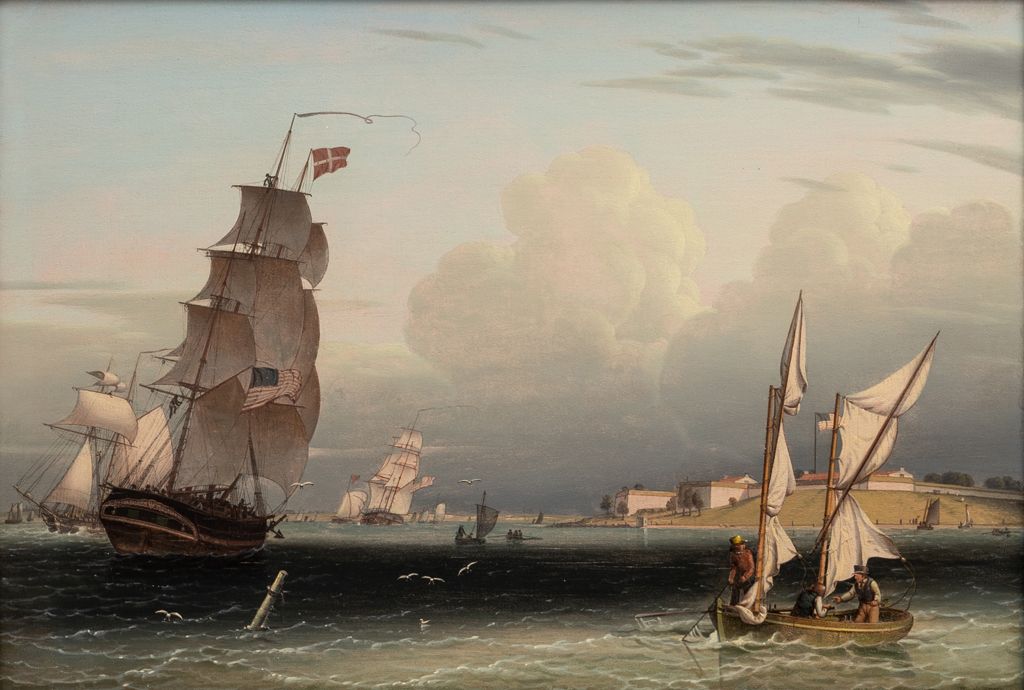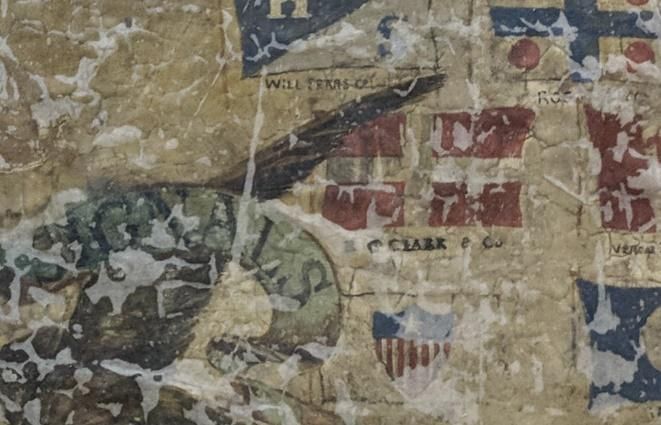
Robert Salmon (1775–c. 1845)
View of Boston Harbor, Ship Going Out, 1832
Oil on canvas
McMullen Museum of Art, Boston College, Carolyn A. and Peter S. Lynch Collection, 2021.22

Jeffery Howe
Professor Emeritus, Art History

Robert Salmon was one of the most prolific maritime artists of his time, painting nearly one thousand works. The richness of his light effects links him to the luminist movement (1825–75). Salmon was born in England, but lived in Boston from 1828 until 1840. His small home on Marine Railway Wharf in the North End overlooked the very active Boston Harbor. In this painting Salmon depicts a number of large commercial vessels in full sail, leaning from the strong winds as they head out into the Atlantic Ocean. Salmon’s detailed nautical knowledge is evident in the rigging of the tall ships and the variety of small craft that populate the harbor.
Fort Independence is seen in the right background. This bastion fort was originally built by the British in the seventeenth century, and was first known as Castle William. It was rebuilt after the Revolutionary War, and renamed Fort Independence in 1797. The current granite structure was constructed in 1833–51 (see photo). A symbol of American independence, it echoes the American flag conspicuously shown on the nearest tall ship. The ship also flies a prominent red flag with white cross. This is the house flag for B. C. Clark & Co. (see image), a noted shipping company in Boston that was engaged in the West India Trade, principally with Cape Haytien (Haiti) for coffee, as well as for Mediterranean fruit and wine. B. C. Clark & Co. also participated in the slave trade in Brazil, according to contemporary British anti-slavery journals. Although no name is visible, this ship could be their brig Water Witch, built in 1831.


